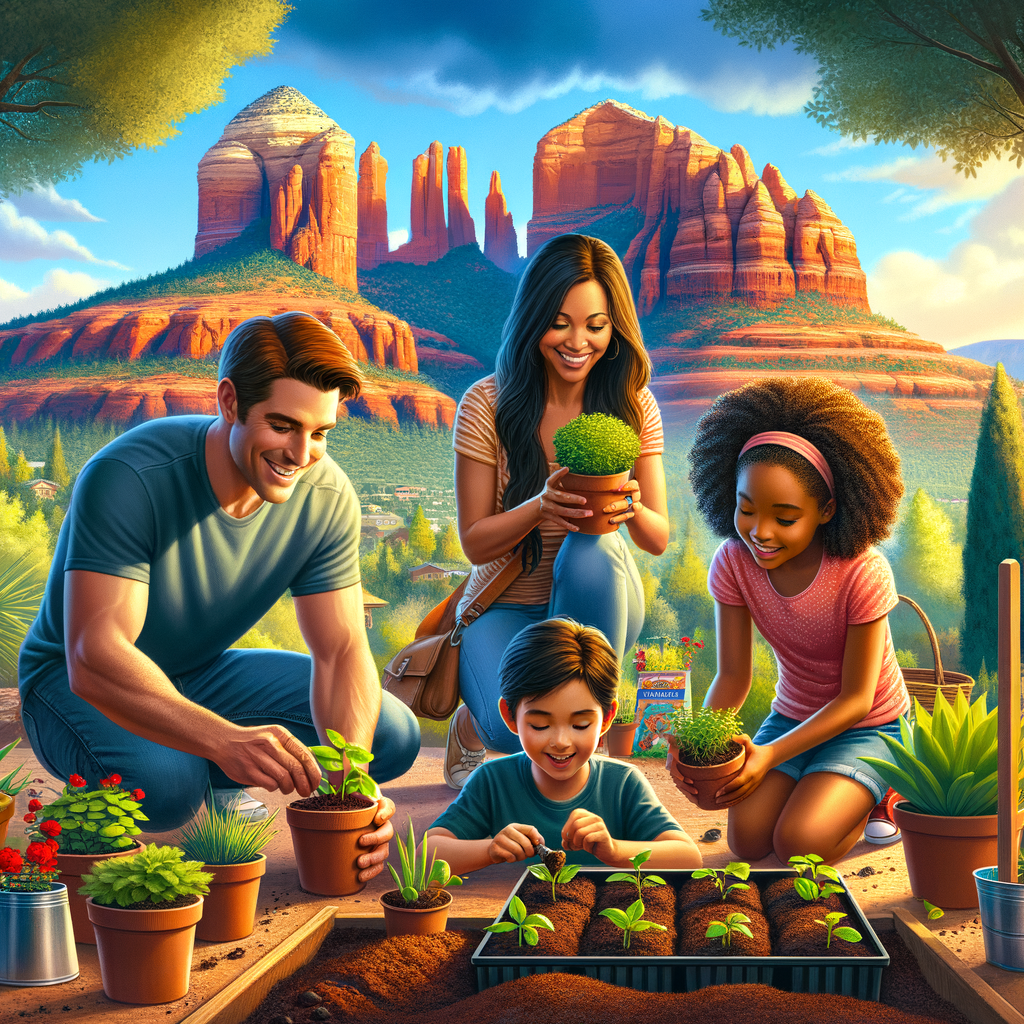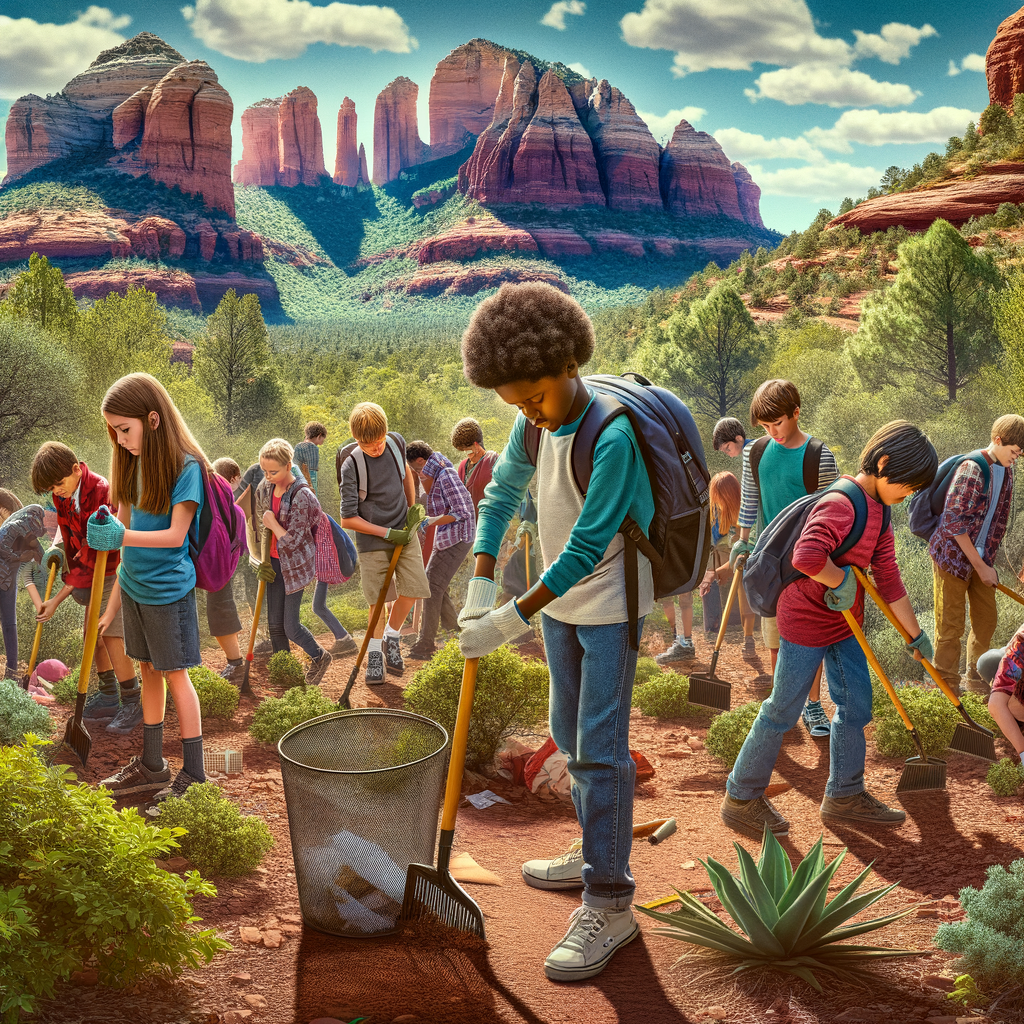Engaging Kids in Gardening: Starting a Small or Container Garden Together
“`html
Gardening Together: How to Start a Small Garden or Container Garden
The Joy of Gardening with Kids
When you think of gardening, what comes to mind? For many, it’s a peaceful escape into nature, a place where life flourishes. Now, imagine sharing that experience with your kids. Gardening is more than just planting seeds; it’s a delightful adventure that fosters creativity and responsibility. Watching a seedling grow into a lush plant can ignite a sense of wonder in children that few activities can match.
Moreover, gardening together fosters bonding. It’s a chance to unplug from technology and reconnect with nature, learning valuable lessons along the way. Kids get to see the fruits of their labor – quite literally! They’ll discover how to care for living things, the importance of patience, and even the science behind photosynthesis. Isn’t it incredible how something as simple as a seed can open up a world of learning?
Choosing the Right Space for Your Garden
Before you rush out to buy seeds, take a moment to assess your environment. Do you have a spacious backyard, or are you limited to a balcony? Both spaces can be transformed into lovely gardens, but the approach may vary. If you have a backyard, you might consider a traditional small garden; if you’re working with a balcony, container gardening might be the way to go. Each setup has its own charm.
Assessing sunlight is crucial. Most plants thrive in at least six hours of sunlight. If your space is a bit shady, don’t fret. There are plenty of shade-loving plants that can beautify your area too. Whether it’s a corner of your yard or a windowsill, each space has the potential to blossom with a little creativity and care. So, get your kids involved in picking out the best spot for your future garden, making the decision a shared adventure.
What Will You Plant? A Beginner’s Guide to Plants
The next step is one of the most exciting: deciding what to plant. While you might dream of a sprawling vegetable garden or exotic flowers, it’s best to start simple, especially if this is your first time gardening with kids. Herbs like basil, parsley, and mint are excellent choices; they’re easy to grow and you can use them in your cooking later on. Plus, kids love the idea of growing their own ingredients!
If you prefer flowers, try sunflowers or marigolds – they’re cheerful and not overly demanding. For container gardens, consider strawberries or cherry tomatoes. They’re compact and yield delicious results. Involve your kids in the selection process. Let them choose what intrigues them most. This personal touch will make them feel invested and excited about nurturing their new plants.
Getting Your Supplies Ready
Now that you know what you want to plant, it’s time to gather your supplies. You’ll need pots or soil for a garden bed, gloves, trowels, and of course, seeds or seedlings. If you’re container gardening, ensure you have drainage holes in your pots to prevent water from accumulating at the bottom. This is a crucial detail that often gets overlooked. Not having proper drainage could drown your plants!
When buying soil, consider organic options, especially if you’re growing vegetables or herbs. Organic soil is often enriched with nutrients that foster healthy plant growth. A fun project for the kids could be creating custom plant markers out of stones or popsicle sticks. This way, they can track what they’ve planted, and they’ll have a sense of ownership over their little green space.
Planting Your Garden: Step-by-Step
Time to get your hands dirty! Depending on what you’re planting, the method of sowing will vary slightly. For seeds, follow the instructions on the packet regarding depth and spacing. Kids can help with making the holes in the soil, pouring seeds in, and covering them back up. It’s a great way for them to learn about how plants grow from the ground up!
If you’re transplanting seedlings, it’s a bit different. Gently remove the plant from its pot, being careful not to disturb the roots too much. Create a hole in your soil, set the plant in, and pat the soil around it. Water them lightly at first. This will help settle the soil. Allow your kids to be as hands-on as possible. Every little interaction builds their understanding and confidence while making the process fun.
Watering and Maintaining Your Garden
Once your garden is planted, don’t forget that plants need love to thrive! Water regularly, but be careful not to over-water. A good rule is to stick your finger in the soil. If it feels dry about an inch down, it’s time for a drink. Involve your kids in this routine! It’s a great way for them to learn about the importance of consistent care. Make it a fun ritual – they could sing to the plants as they water them.
Pest control can be a fun lesson too. Teach your kids to look for signs of trouble, like holes in leaves or sticky residue. If you spot any pests, don’t be quick to reach for chemicals. There are numerous natural pest control methods you can employ, such as introducing ladybugs or using soap solutions. This way, kids learn the importance of taking care of their plants without relying heavily on chemicals.
Harvesting: The Best Part of Gardening
After weeks of nurturing, the moment of truth arrives: harvesting! Depending on what you’ve planted, this can happen after a few weeks to a few months. Explain to your kids that patience pays off in gardening. When you finally pick off those ripe tomatoes or fragrant herbs, the satisfaction is incredible. It’s like unearthing treasure.
Don’t forget to celebrate this milestone! Use your harvest in a family meal. Let your kids suggest recipes that incorporate what they’ve grown. Watching them take pride in their contribution to the dinner table is just heartwarming. You’ll not only enjoy delicious food but also create lasting memories through your gardening adventure.
Conclusion
Starting a small garden or container garden with your kids is more than just about plants; it’s about nurturing relationships, instilling responsibility, and sparking curiosity about nature. The entire process, from planting to harvesting, is ripe with opportunities for learning and bonding. So, gather your supplies and engage your children in the magical world of gardening. It’s a fantastic way to grow not just plants, but also meaningful experiences together.
FAQs
What is the best time to start a garden with kids?
The best time to start a garden is typically in the spring when the risk of frost has passed. However, indoor container gardening can be started any time of the year, allowing for flexibility depending on your situation.
Can I garden if I don’t have a backyard?
How often should I water the plants?
What plants are best for kids to grow?
Kid-friendly plants include fast-growing herbs like basil and mint, colorful flowers like sunflowers, or easy-to-grow vegetables like radishes and lettuce. These plants keep children engaged and excited to see results quickly.
What can I do to make gardening more fun for kids?
Incorporate games into gardening! Create scavenger hunts, make plant markers, or even have a “Garden Art” day where they can decorate pots. Involving art and play keeps the experience joyous and memorable for your children.
If you are interested in looking into an organized tour for you and your kids, consider visiting our preferred vendor: Sedona Red Rock Adventures.
“`
news via inbox
To be update with all the latest news.




